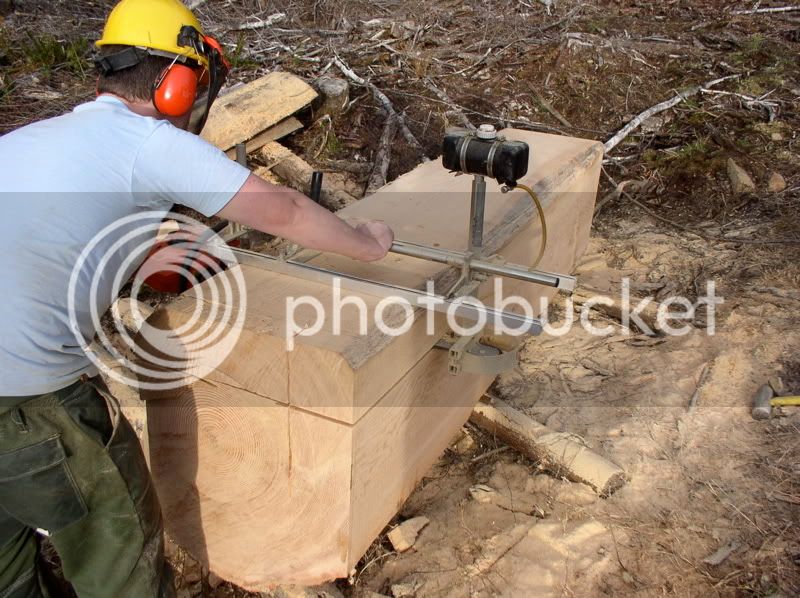duffontap
ArboristSite Member
Ok, so I've got a little more than a year of experience working with my Granberg mills (MK 3 and Mini), and I'm always fighting the temptation to buy a bigger powerhead (comes with the territory--I know).
My Current Setup:
I currently have a 268xp and a 272xp that both run a 32" bar on a 36" mill with an aux. oiler and Carlton A3 chain. I know that even my 272xp is a featherweight for CSM work but I mostly milling softwoods and I get along fine with patience. I didn't pay much for either saw so I'm just planning on wearing them out--i.e., longevity is not an issue. But--here it comes--what about milling speed? At full capacity (about 24-26 inches wide) I can cut about a foot a minute with a sharp chain in good, dense Douglas Fir. At half the width, I can about double the speed, and at 6" wide I double it again--about 4 feet per minute.
The Dream:
As I'm creeping my way through wide cuts, I sometimes dream of buzzing along at 2-3" per second with a 395xp, waist deep in sawdust before I get a sore back--but is this within reason? My question is--all other things being equal (same chain, same mill, same operator, same wood) how much speed would I gain by laying out $1,000 on a new powerhead? Would I see a huge difference with a 385, or would I wish that I had sprung for the 395...or the 3120? Or, should I consider just picking up an old Husky 2100 for $200 and calling it good?
I know a lot of you guys are milling with monster saws, and I'm wondering if anyone who had started with a smaller saw like mine and worked their way up had any advice for me. What are reasonable expectations with an upgrade?--etc.
J. D.

My Current Setup:
I currently have a 268xp and a 272xp that both run a 32" bar on a 36" mill with an aux. oiler and Carlton A3 chain. I know that even my 272xp is a featherweight for CSM work but I mostly milling softwoods and I get along fine with patience. I didn't pay much for either saw so I'm just planning on wearing them out--i.e., longevity is not an issue. But--here it comes--what about milling speed? At full capacity (about 24-26 inches wide) I can cut about a foot a minute with a sharp chain in good, dense Douglas Fir. At half the width, I can about double the speed, and at 6" wide I double it again--about 4 feet per minute.
The Dream:
As I'm creeping my way through wide cuts, I sometimes dream of buzzing along at 2-3" per second with a 395xp, waist deep in sawdust before I get a sore back--but is this within reason? My question is--all other things being equal (same chain, same mill, same operator, same wood) how much speed would I gain by laying out $1,000 on a new powerhead? Would I see a huge difference with a 385, or would I wish that I had sprung for the 395...or the 3120? Or, should I consider just picking up an old Husky 2100 for $200 and calling it good?
I know a lot of you guys are milling with monster saws, and I'm wondering if anyone who had started with a smaller saw like mine and worked their way up had any advice for me. What are reasonable expectations with an upgrade?--etc.
J. D.

Last edited:




